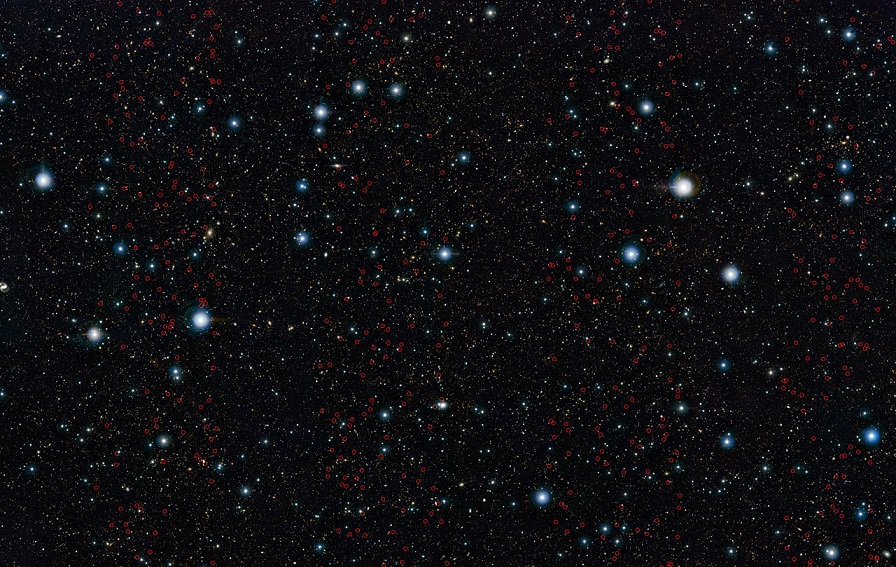De geboorte van monsters
ESO’s VISTA-surveytelescoop heeft een horde zware sterrenstelsels opgespoord die al bestonden toen het heelal nog in zijn kinderschoenen stond. Door meer van deze stelsels te ontdekken en onderzoeken zijn astronomen er achter gekomen wanneer deze monsterstelsels voor het eerst op het toneel verschenen.
Door het aantal sterrenstelsels in een stukje hemel te tellen, kunnen astronomen hun theorieën over de vorming en evolutie van sterrenstelsels toetsen. Maar deze eenvoudige taak wordt moeilijker naarmate astronomen zwakkere stelsels op grotere afstanden van de aarde proberen te tellen. Daarbij komt nog dat de helderste, gemakkelijkst waarneembare stelsels – de zwaarste sterrenstelsels in het heelal – schaarser worden naarmate astronomen dieper het heelal in turen. En de veel talrijkere zwakkere stelsels zijn nóg moeilijker te vinden.
Een team van astronomen, onder leiding van Karina Caputi van het Kapteyn Instituut van de Rijksuniversiteit Groningen, heeft nu een groot aantal sterrenstelsels opgespoord die tot nu toe onopgemerkt waren gebleven. Daarbij is gebruik gemaakt van opnamen uit de UltraVISTA-survey, een van de zes VISTA-projecten waarbij de hemel op nabij-infrarode golflengten wordt verkend. Het resultaat is een ‘volkstelling’ van zwakke sterrenstelsels die bestonden toen het heelal nog maar 0,75 tot 2,1 miljard jaar oud was.

